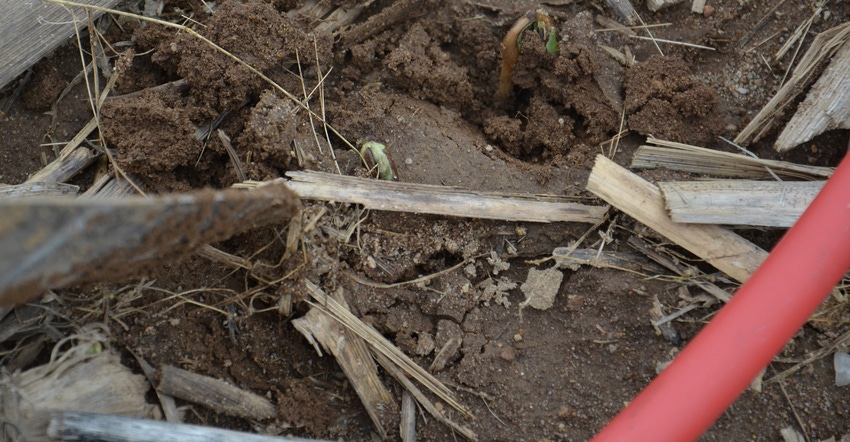April 30, 2018

Planting date becomes a big factor in soybean replant decisions as the calendar moves deeper into June. Say it’s June 10, and one field of beans didn’t come up well. I hold a 36-inch hula-hoop in five places and count 9, 11, 10, 8 and 14 bean plants within the hoop. Now what do I do? Should I replant? My seed company pays half the cost of replant seed.
This month’s panel of Indiana certified crop advisers includes: Don Burgess, agronomist, A&L Great Lakes Labs, Fort Wayne; Jesse Grogan, corn product development manager for AgReliant Genetics, Lafayette; and Bryan Overstreet, Jasper County Extension ag educator.
Overstreet: First, you need to see what your average population is. With the numbers you provided, your average population calculates out at 64,000 plants per acre. According to the Purdue University Corn & Soybean Field Guide, a population of 60,000 would average 92% of original yield potential in drilled beans and 94% in 30-inch-row beans.
Now we need to look at what happens if you replanted. If you replant June 10, you could expect 92% of normal yield with a midseason variety or 90% with a full-season variety. The yield would be a wash, and you would need to still figure in your labor and machinery cost. I would recommend leaving the stand alone but keeping an eye out for weed breaks due to not as much shading by soybean plants.
Burgess: You should probably expect about the same yield loss with the later planting as with the reduced population. According to research from Purdue University, you would generally expect to see 90% to 95% of your normal yield. In contrast, by replanting on June 10, you would still expect to see yields in that same range as compared to normal. If poor seedbed conditions are also present at replant, these figures could be reduced even further.
Although your seed company will cover half of the seed cost, your share of the seed, as well as fuel and equipment costs for the replant pass, will likely reduce overall returns — and there is no guarantee that the replanted areas will fare any better.
Identifying the cause of the reduced stand is critical. If disease pressure, seed placement issues or some other factor that can be addressed by a change in management is the cause, it’s a good opportunity to learn and make changes necessary to prevent similar issues in future years.
Grogan: Reduced stands usually require more weed control, regardless of replanting. Equipment, weed control and seed costs should be considered. Assume they’re $50 to $70 per acre. Replanting on June 10 could improve yield by 3 to 10 bushels per acre, if all goes well. A soybean market price of $10.30 would result in a $30-to-$103-per-acre increase in gross revenue with replanting, which is below or about the cost of replanting.
If crop insurance for replanting is applicable, it would make the margin more reasonable. Timing is one of the most difficult factors. It’s better to finish planting all fields the first time before replanting any fields. It’s also best to minimize injury to the existing stand when replanting. Many soybean replanting decisions have been on the appearance of the field. In my years of experience, in many cases replanting didn’t return a profit unless there were large areas of very low stands — below 50,000 plants per acre.
You May Also Like




